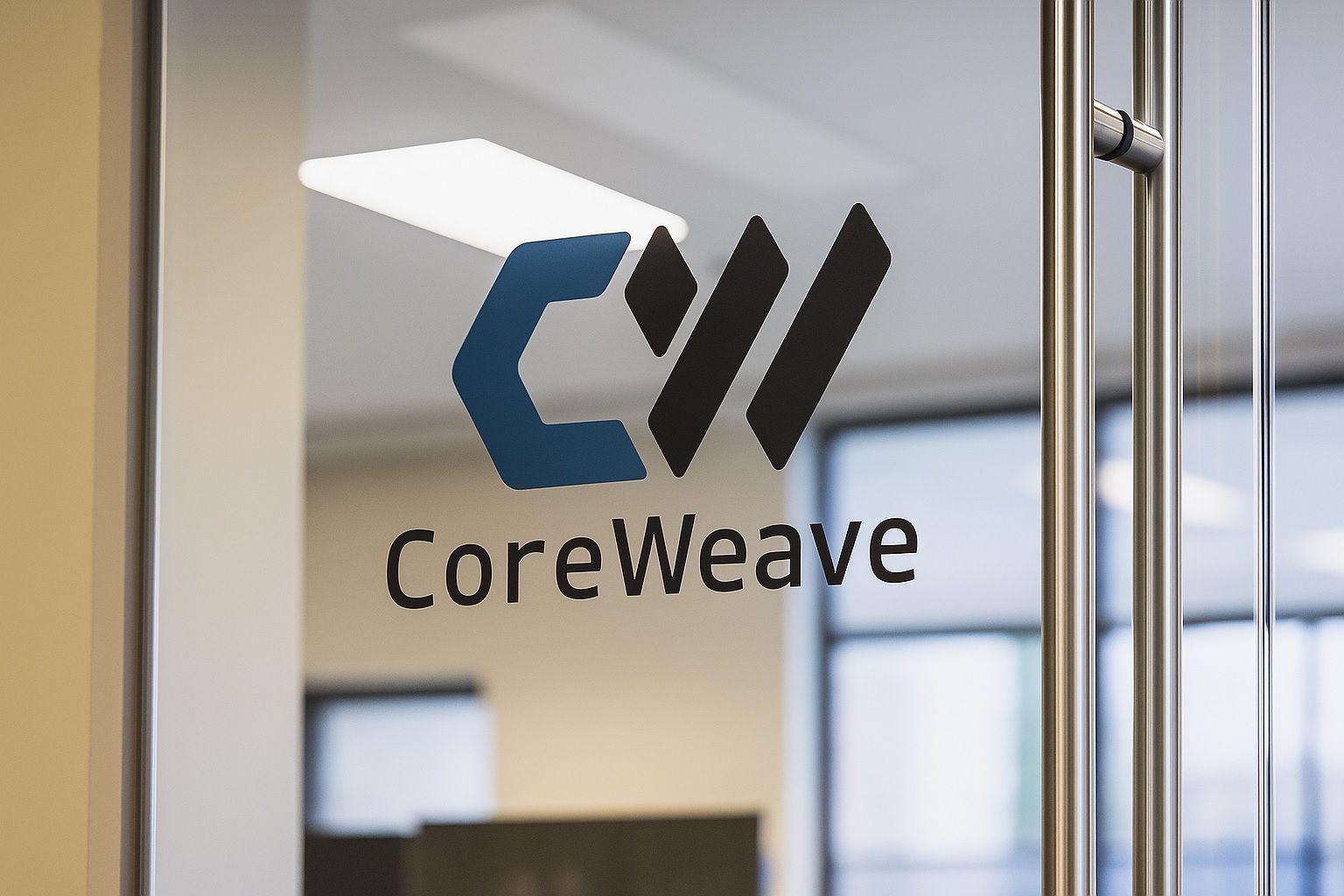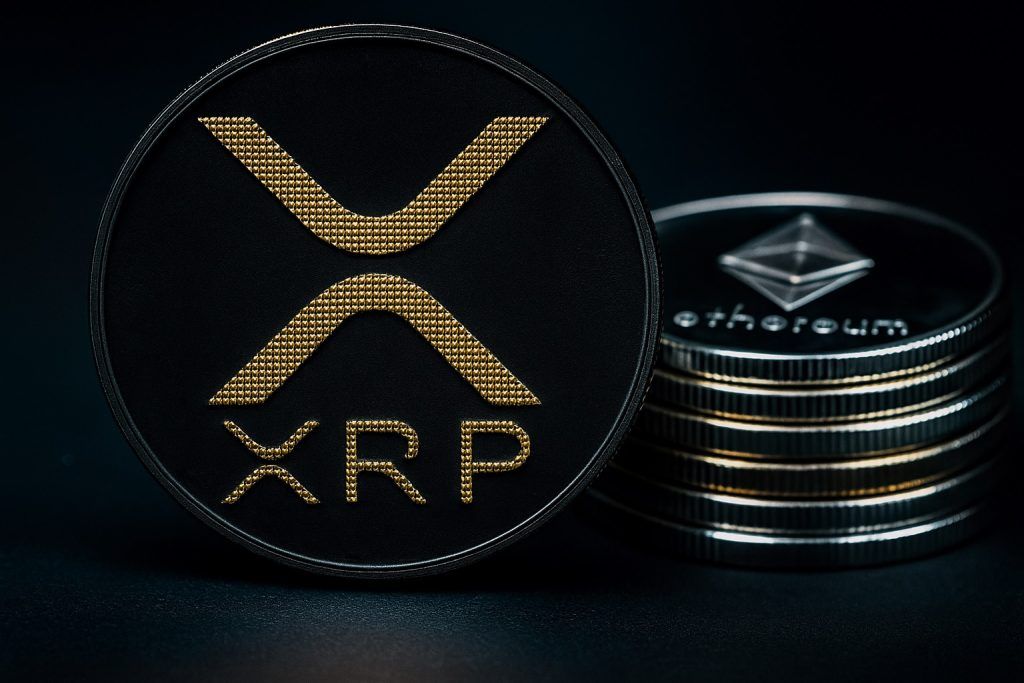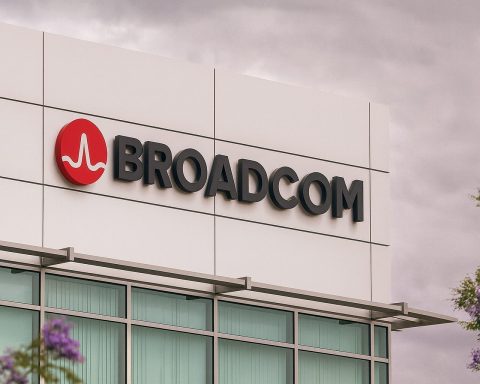CoreWeave’s roller‑coaster November is continuing. By the close on Friday 21 November 2025, CoreWeave stock (NASDAQ: CRWV) had given up more ground, even as fresh commentary, institutional buying and a growing legal overhang kept the AI cloud specialist firmly in the headlines.
The move caps an extraordinary month in which one of 2025’s hottest AI IPOs has flipped from market darling to battleground stock.
CoreWeave stock price today (21 November 2025)
Based on end‑of‑day data, CoreWeave shares closed around $66 on Friday, down roughly 4–5% from Thursday’s close near $69.² The stock traded between the mid‑$60s and low‑$70s during the session, with volume in the tens of millions of shares – high, but lower than the post‑earnings panic earlier in the month. [1]
That latest decline leaves CoreWeave:
- Down about 46% over the past month, according to analysis highlighted by The Motley Fool. [2]
- Trading well below its 52‑week high near $187, but still above its March IPO price of $40. [3]
- Sitting in the middle of its 52‑week range (~$34 to $187), a reminder of just how extreme the stock’s earlier surge was. [4]
After the closing bell, some platforms showed CRWV ticking modestly higher in after‑hours trading around the high‑$60s, suggesting short‑term traders are already positioning for a bounce after the latest sell‑off. [5]
The big CoreWeave headlines on 21 November 2025
A cluster of fresh stories hit today, most of them trying to answer the same question: has CoreWeave’s brutal drawdown gone too far, or is this just the air leaking out of an AI bubble?
Here are the key threads.
1. Two new deep‑dive pieces from The Motley Fool
The Motley Fool published two CRWV articles today:
- “What’s Going On With CoreWeave Stock?” – This note points out that CoreWeave shares are down roughly 46% in the last month, as investors reassess how much they’re willing to pay for even the strongest AI infrastructure stories. It also notes that some investors are hoping for a reversal once the dust from earnings settles. [6]
- “Huge News for CoreWeave Stock Investors” – In a second piece, the author highlights that management has reiterated an upbeat outlook for revenue growth, despite trimming near‑term guidance and dealing with data‑center bottlenecks. The suggestion is that the long‑term AI demand story is intact even if the next few quarters are messy. [7]
Taken together, those articles essentially frame today’s move as the market struggling to reconcile spectacular growth metrics with real execution and capital‑intensity risks.
2. New institutional buying: Rockefeller Capital takes a stake
A new 13F‑style disclosure reported by MarketBeat shows Rockefeller Capital Management L.P. opening a fresh position in CoreWeave during the second quarter. The firm bought about 49,000 shares, valued at roughly $8 million at the time of filing, and MarketBeat notes several smaller wealth managers have also initiated positions. [8]
That kind of institutional interest doesn’t guarantee a bottom, but it does show some large investors are willing to step into the weakness, even after the stock’s violent move down from the $100+ area.
3. Legal overhang: Pomerantz investigation still front and center
While the core press release dropped yesterday, Pomerantz LLP’s “investor alert” is being republished across financial newswires and portals today, keeping legal concerns in the spotlight. [9]
The law firm says it is investigating potential securities‑law claims on behalf of CoreWeave investors, focusing on whether the company and certain executives may have misled shareholders. The alert specifically ties the probe to CoreWeave’s 10 November Q3 earnings release, where the company cut its 2025 revenue forecast due to data center capacity issues. On that news, shares dropped about 16% the next day, closing around $88 on 11 November. [10]
Crucially, this is just an investigation, not a lawsuit or judgment. No wrongdoing has been proven. But these sorts of announcements often add psychological pressure in already‑weak stocks.
4. Sector sentiment: Nvidia rally fizzles, AI trade cools
Broader AI sentiment also turned against CoreWeave again today.
A piece on TipRanks notes that CoreWeave, Nebius and IREN have all surrendered Nvidia‑driven gains from earlier in the week, as the market’s brief enthusiasm after Nvidia’s latest earnings faded. [11]
Meanwhile, a Dow Jones/Morningstar recap of Thursday’s session describes an “AI rally fizzling” as names like CoreWeave and AMD gave back Nvidia‑related spikes. [12]
In short: it’s not just company‑specific issues. The entire AI‑infrastructure trade is seeing sentiment whipsaw, and CRWV has become one of the most volatile proxies for that theme.
5. CoreWeave as poster child for “neoclouds” – but with big question marks
On the enterprise‑tech side, Computing.co.uk published an overview of the cloud market today, highlighting how specialised AI‑focused providers are nipping at the heels of hyperscalers like AWS, Azure and Google Cloud. [13]
In that report:
- CoreWeave is described as leading a new cohort of “neoclouds” – specialist GPU‑dense clouds tailored for AI workloads.
- At the same time, the piece points out that “serious questions remain” about CoreWeave’s business model and long‑term viability, echoing concerns raised elsewhere about capital intensity, dependence on a handful of large customers and the sustainability of its growth trajectory. [14]
That duality – market‑leading growth coupled with structural questions – is exactly what the stock is wrestling with right now.
How we got here: Q3 earnings shock and guidance cut
To understand why CoreWeave is under so much pressure on 21 November, you have to rewind to its Q3 2025 resultsreleased on 10 November.
Blow‑out growth…
CoreWeave’s own earnings release described Q3 as a record quarter driven by “unprecedented demand for AI.” Key numbers: [15]
- Revenue: $1.36 billion, up about 134% year over year (from ~$584 million in Q3 2024).
- Revenue backlog: $55.6 billion, more than 10× the annualised Q3 revenue run‑rate – a massive forward book of business.
- Adjusted EBITDA: $838 million, with margins in the low‑60% range.
- Net loss: about $110 million under GAAP, narrower than a year earlier, largely due to heavy interest expense on CoreWeave’s growing debt stack.
Operationally, the company highlighted:
- An up to $14.2 billion multi‑year deal with Meta.
- An expanded OpenAI commitment now totalling up to $22.4 billion across several agreements.
- A $6.3 billion strategic collaboration with Nvidia to scale GPU infrastructure.
- Rapid data‑center scaling, adding ~120 MW of power in the quarter, taking total active power to ~590 MW and contracted power to about 2.9 GW. [16]
Those numbers underpin the bullish argument that CoreWeave is one of the core picks‑and‑shovels providers for the AI boom.
…but a guidance cut and data center issues spooked investors
The catch – and the trigger for November’s sell‑off – was in the outlook.
According to Reuters, CoreWeave’s CFO cut the company’s 2025 revenue forecast to $5.05–$5.15 billion, down from $5.15–$5.35 billion and below the ~$5.29 billion analysts were expecting. The company blamed a delay at a third‑party data center partner, which pushed out some near‑term revenue even though the contract’s total value was said to be unchanged. [17]
The market reacted violently:
- Shares fell more than 6% in after‑hours trading immediately after the call, then ultimately dropped over 16% to about $88 on 11 November. [18]
- QuiverQuant later calculated that CRWV fell about 26% over the week following the report, making it one of the most searched tickers on its platform. [19]
That guidance tweak, combined with fresh scrutiny of data‑center reliability, capital spending plans and margin pressure, is still echoing through today’s price action.
Fundamentals vs fear: what analysts and data are saying
Despite the drop, Wall Street and alternative‑data firms are far from unanimous in turning bearish.
Analyst targets remain far above today’s price
QuiverQuant’s compilation of analyst research shows: [20]
- About 12 firms with Buy ratings versus only 2 with Sell.
- A median 12‑month price target around $140, more than double today’s ~$66–70 level.
- Fresh Buy or Overweight calls this month from Compass Point, Wells Fargo, H.C. Wainwright and others, with price targets mostly between $120 and $180.
CoinCentral’s review of the stock earlier this week noted that H.C. Wainwright reaffirmed a Buy rating and a $180 price target on 12 November, arguing that the long‑term demand picture remained attractive despite short‑term volatility. [21]
At the same time, big‑name firms like J.P. Morgan have downgraded the stock to Neutral with lower targets (around $110), pointing to execution risk and a much tougher funding environment. [22]
Massive insider selling – and heavy institutional interest
The QuiverQuant piece that went viral last weekend didn’t just talk about the 26% weekly drop. It also highlighted: [23]
- 1,600+ insider sale transactions over the past six months, with no insider purchases reported in that period.
- Large disposals by early investors and executives, including multi‑billion‑dollar sales by Magnetar Financial and substantial selling by CoreWeave’s founders and senior leadership.
- On the flip side, 378 institutional investors added CRWV shares in their latest filings, versus 101 who reduced positions, including major asset managers like Vanguard and Morgan Stanley.
That combination – insiders cashing out while funds accumulate – is a classic feature of post‑IPO high‑growth stocksand fuels both sides of the bull‑bear debate.
Strengths the bulls point to
Supporters of CoreWeave’s long‑term story argue that today’s price action is mostly the market repricing near‑term risk, not a verdict on the business itself.
Key points they cite:
- Explosive growth and backlog
- Revenue more than doubled year over year in Q3, and backlog of $55.6 billion suggests strong multi‑year visibility if CoreWeave can deliver. [24]
- Deep AI partnerships
- Multi‑billion‑dollar deals with Meta and OpenAI, plus a strategic collaboration with Nvidia, position CoreWeave as a central player in AI infrastructure rather than a niche cloud reseller. [25]
- Aggressive expansion of capacity and capital
- The company recently expanded its revolving credit facility from $1.5 billion to $2.5 billion, extending its maturity and giving management more flexibility to fund new data centers. [26]
- It also raised $1.75 billion in 9% senior notes due 2031 and arranged several large delayed‑draw term loan facilities to lower its cost of capital versus older debt. [27]
- Product and pricing moves like “Zero Egress”
- On 13 November, CoreWeave launched its Zero Egress Migration program, effectively waiving data‑transfer fees for customers moving workloads from AWS, Google Cloud, Azure, IBM or Alibaba – a direct attack on one of the biggest pain points of the hyperscalers. [28]
- Growing recognition in the cloud market
- Today’s Computing.co.uk report explicitly calls out CoreWeave as the leader of a new wave of specialist “neoclouds” focused on GPU‑dense AI workloads – a sign that it’s now seen as a genuine category‑defining player, not just a niche upstart. [29]
From this angle, the current valuation – after a roughly 60%+ slide from the highs – looks like a chance to buy an AI infrastructure pure play at a steep discount to recent prices.
The risks worrying the bears
On the other hand, today’s continued sell‑off shows that a lot of investors remain deeply uneasy. The main concerns:
- Execution and data‑center bottlenecks
The Q3 guidance cut tied to a third‑party data center delay rattled confidence in CoreWeave’s ability to deliver on its huge backlog without hiccups. If this kind of disruption becomes recurring, revenue recognition could lag well behind demand. [30] - Capital intensity and leverage
CoreWeave’s growth strategy depends on massive capital spending and a complex web of credit facilities and high‑coupon debt. While extending and upsizing its revolver helps, the company is still committing billions to data‑center build‑outs, leaving less room for error if demand or pricing soften. [31] - Concentration risk
A significant chunk of CoreWeave’s backlog is tied to a small number of huge customers like OpenAI and Meta. Losing, shrinking or even renegotiating one of those relationships could have outsized impact on future revenue. [32] - Legal and reputational uncertainty
The ongoing Pomerantz LLP investigation into potential securities‑law violations is still at an early stage, but it increases the perceived risk around CoreWeave’s disclosures and could ultimately lead to costly litigation or settlements if any claims are filed and succeed. [33] - Valuation and AI‑bubble fears
Even after the drawdown, CRWV is still up significantly from its $40 IPO price, and pieces like the Bloomberg feature on “AI data‑center billionaires” have fed a narrative that early insiders cashed in aggressively at the top. [34]
Combined with pervasive AI hype, that’s making some investors wary of paying high multiples for a company with narrow GAAP margins and heavy capex needs.
What to watch next if you follow CoreWeave stock
For readers tracking CoreWeave into the rest of 2025, here are the key catalysts and questions emerging from today’s action:
- Resolution of data‑center delays
Does management provide more detail about the third‑party capacity issues, and are there signs they’re being resolved quickly? Investors will be looking for updates in any upcoming conferences or filings. [35] - Progress on funding and balance sheet
Watch for further debt transactions, potential equity raises, or changes to the enlarged credit facility – all of which will shape CoreWeave’s flexibility to keep building GPU‑dense infrastructure at scale. [36] - Legal developments
Any move from investigation to actual lawsuit in the Pomerantz matter would be price‑sensitive. Conversely, if the issue quietly fades without a case, that could remove one overhang. [37] - Customer announcements and contract expansions
New or expanded deals with flagship clients like OpenAI, Meta or major financial institutions will help investors gauge whether the demand story is strengthening or slowing. [38] - AI‑infrastructure sentiment more broadly
As today’s Nvidia‑related reversal showed, CoreWeave trades partly as a macro AI sentiment barometer. Moves in peers, GPU supply/demand, and broader tech valuations can spill over into CRWV even in the absence of company‑specific news. [39]
Bottom line
On 21 November 2025, CoreWeave stock is still very much in the penalty box. The shares continue to slide as investors digest a toxic mix of earnings‑related disappointment, legal questions, heavy insider selling and a cooling AI‑hype cycle.
At the same time, today’s news flow also underscores how fundamentally important CoreWeave has become in the AI infrastructure stack: huge backlog, deep partnerships with the biggest AI players, and enough capital firepower to keep building.
Whether CRWV at ~$60–70 turns out to be a bargain or a value trap will depend on a few critical things: how quickly management can iron out data‑center issues, how disciplined they are with capital, and whether the AI spending boom maintains its current trajectory.
For now, the only thing that’s clear is that volatility is here to stay.
Disclaimer: This article is for informational and educational purposes only and is not investment advice, tax advice or a recommendation to buy or sell any security. Always do your own research and consider speaking with a licensed financial adviser before making investment decisions.
References
1. stockanalysis.com, 2. www.fool.com, 3. www.wsj.com, 4. www.investing.com, 5. public.com, 6. www.fool.com, 7. www.fool.com, 8. www.marketbeat.com, 9. stockhouse.com, 10. www.prnewswire.com, 11. www.tipranks.com, 12. www.morningstar.com, 13. www.computing.co.uk, 14. www.computing.co.uk, 15. investors.coreweave.com, 16. investors.coreweave.com, 17. www.reuters.com, 18. www.reuters.com, 19. www.quiverquant.com, 20. www.quiverquant.com, 21. coincentral.com, 22. finviz.com, 23. www.quiverquant.com, 24. investors.coreweave.com, 25. investors.coreweave.com, 26. seekingalpha.com, 27. investors.coreweave.com, 28. coincentral.com, 29. www.computing.co.uk, 30. www.reuters.com, 31. investors.coreweave.com, 32. investors.coreweave.com, 33. www.prnewswire.com, 34. www.bloomberg.com, 35. www.reuters.com, 36. seekingalpha.com, 37. www.prnewswire.com, 38. investors.coreweave.com, 39. www.morningstar.com








